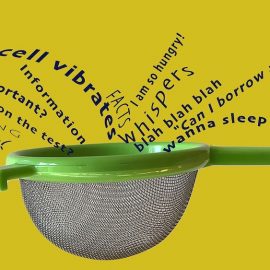

This article is an excerpt from the Shortform book guide to "High Output Management" by Andrew S. Grove. Shortform has the world's best summaries and analyses of books you should be reading.
Like this article? Sign up for a free trial here .
Do you want to know how to hire employees? Why is it so important to hire great employees?
Managers need to know how to hire employees. In order to have a successful company, you need to hire employees that fit with your company and your goals.
Keep reading to find out how to hire employees.
How to Hire Employees
Another important part of being a manager is learning how to hire employees. As a manager, hiring new employees and retaining existing employees who have decided to quit is a key part of your role.
Hiring
So how can you learn how to hire employees? First, acknowledge that hiring is hard. In activity #8, you learned how hard it is to assess the performance of people who already work closely with you even when you have output measures, specific examples of their work, and a confirmed environment. Evaluating the potential performance of a stranger is even more difficult. There’s no foolproof way to hire—even if you follow all of Grove’s recommendations below, you might still end up with a bad hire.
When hiring for a position, your goals should be to:
- Choose a top performer
- Teach her about yourself and the organization
- Figure out if you’re a good fit
- Get her excited about the job
You have two resources with which to do this for learning how to hire employees:
Resource #1: The Interview
You have some resources for how to hire employees. The goal of interviewing is to predict how an applicant would do at your company based on her self-assessment of her own abilities. There’s no way to avoid using self-assessment at the interview stage because you don’t have access to objective measures of skills, performance, and other factors. However, even though self-assessments can be inaccurate, they can still provide good information if, as the interviewer, you’re blunt and direct, because this usually inspires similar directness in the applicant.
Here are some tips for interviewing:
Tip #1: Aim to learn the following types of information:
- Technical skill level. Ask her to describe a project she’s completed or about her skills weaknesses. This will tell you if she’ll be able to do the job you’re hiring for.
- Ability to apply skills. Ask questions about previous successes and failures to determine if the applicant knows how to actually apply her skills.
- Discrepancy between knowledge and actions. If a person is capable but didn’t perform, find out why. Ask about issues at her current job and what she’s learned from past mistakes.
- Values. Ask why she wants a new job and why she feels your company is a good fit. Her values will tell you how she will approach the job. (Shortform example: If you run a non-profit that rescues animals, and the applicant values humane treatment of animals, she’ll likely approach her job with a lot of passion and motivation.)
Tip #2: Listen. The applicant should talk for 80% of the time so you can learn as much about them as possible.
Tip #3: If the applicant gets off topic, interrupt her and tell her you’d like to change the subject. You only have an hour or two—use it wisely.
Tip #4: Use the same language and make sure you both understand the meaning of any jargon you use.
Tip #5: Ask the applicant to consider a hypothetical situation. For example, when Grove was interviewing an accountant, he asked him to determine the cost of a finished wafer. Grove explained the wafer manufacturing process and answered questions about the process, since the accountant didn’t know how it worked, and the accountant worked out how to determine the price.
Tip #6: Ask the applicant if she has questions. This will show you if she prepared for the interview, if she researched the company, and what she’s looking for in a company.
Tip #7: Don’t use tricks—for example, giving applicants a broken chair and then seeing how they react when they fall. Instead, give a realistic first impression of yourself and the company because it takes first impressions a long time to fade, and encountering tricks during an interview suggests there will be tricks and traps on the job too.
Resource #2: References
When checking references, you want to get the same four pieces of information (see Tip #1) from references that you aimed to get in the interview. This will be difficult for two reasons:
- You’re usually talking to someone you don’t know at a company you don’t know, so it’s hard to accurately weigh someone else’s assessment of performance when you’re not familiar with the environment or company culture.
- Many references don’t give specific criticisms.
To mitigate these challenges, try to develop a bond with the reference to get her to open up to you. Do this by finding something you have in common or stretching out the conversation to give you time to connect.
After talking to references, ideally, interview the applicant again to address anything that came up.

———End of Preview———
Like what you just read? Read the rest of the world's best book summary and analysis of Andrew S. Grove's "High Output Management" at Shortform .
Here's what you'll find in our full High Output Management summary :
- How to increase your managerial output and productivity
- The 11 activities that offer a higher impact on output
- How meetings can be used as a time management tool






